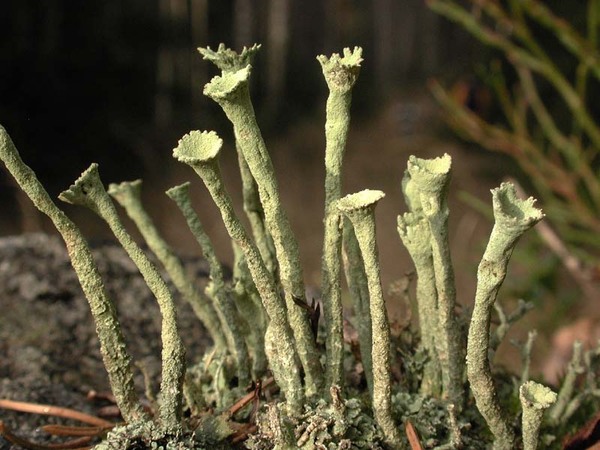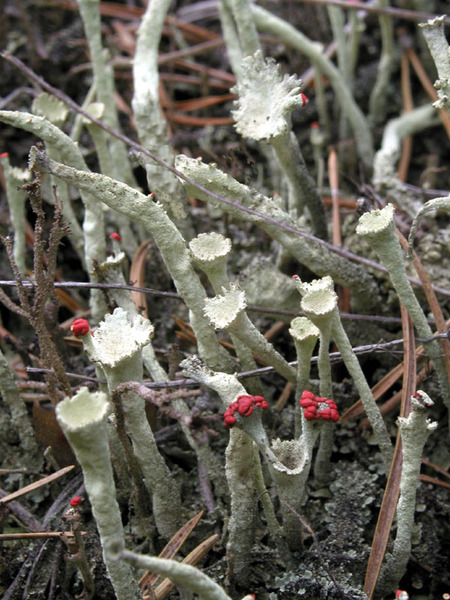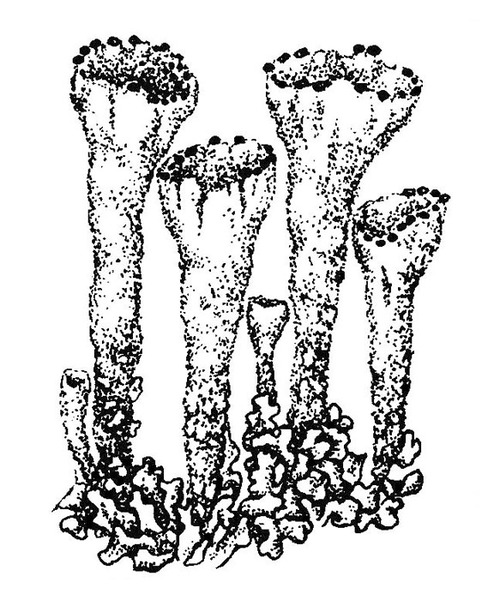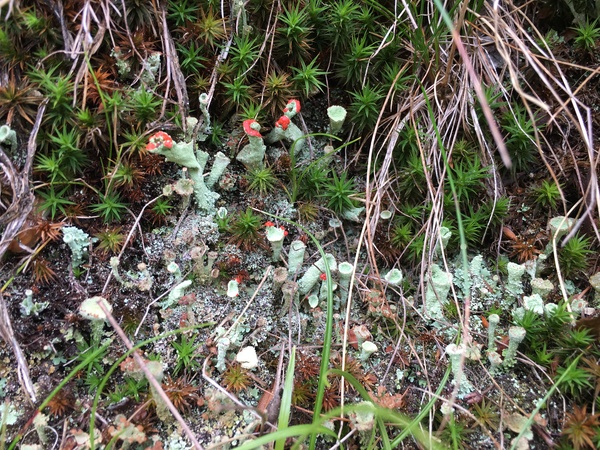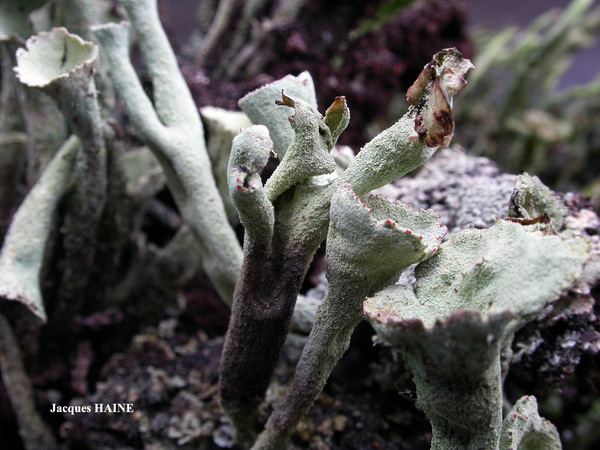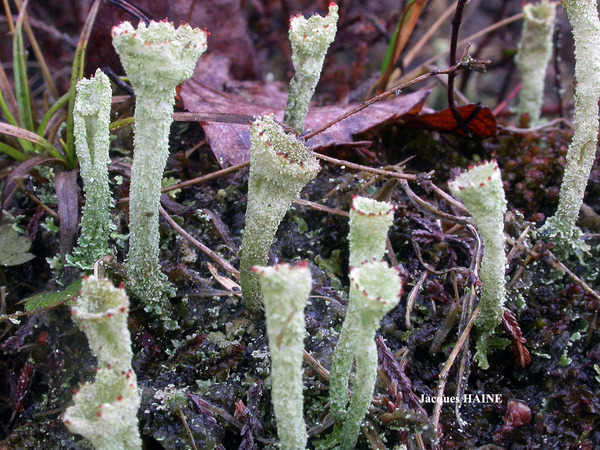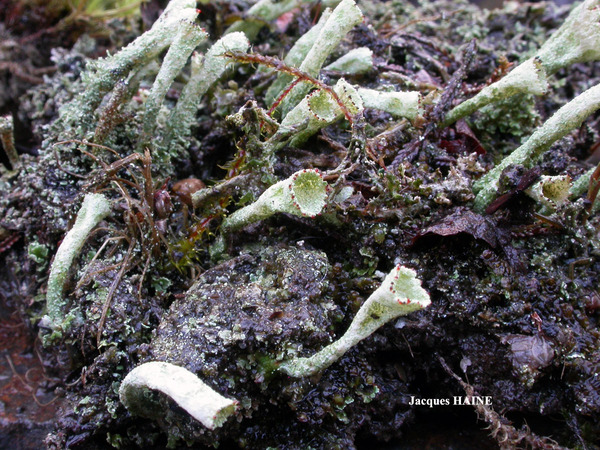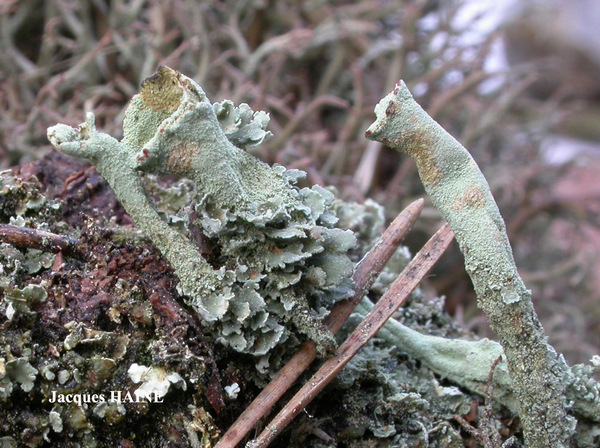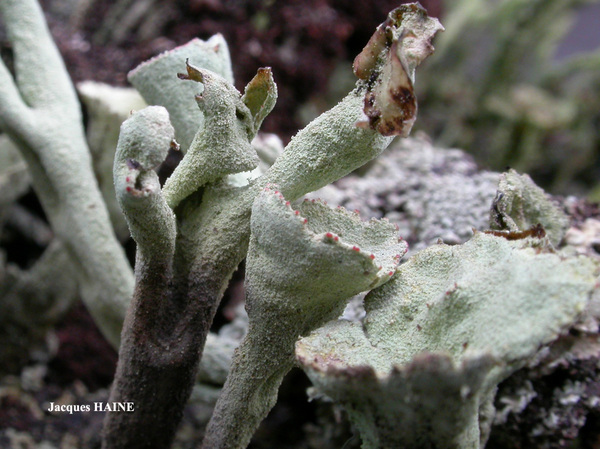Cladonia deformis (L.) Hoffm.
Deutschl. Fl., 2: 120, 1796. Basionym: Lichen deformis L. - Sp. Pl., 2: 1152, 1753.
Synonyms: Cladonia crenulata (Ach.) Flörke
Distribution: N - Frl (Tretiach & Hafellner 2000), Ven (Nascimbene & Caniglia 1997, 2000b, Caniglia & al. 1999, Nascimbene & al. 2006e, Giovagnoli & Tasinazzo 2014), TAA (Caniglia & al. 2002, Nascimbene & Caniglia 2002c, Nascimbene 2006c, Nascimbene & al. 2006e, 2007b, 2008c, 2022, +Nimis & al. 2015), Lomb (Rivellini & Valcuvia 1996, Zocchi & al. 1997, Nascimbene & al. 2006e, Gheza 2019, 2019b, Gheza & al. 2022), Piem (Isocrono & al. 2004, 2006, Isocrono & Piervittori 2008), VA (Borlandelli & al. 1996, Piervittori & Isocrono 1997, 1999, Valcuvia 2000), Emil (Fariselli & al. 2020), Lig (Burgaz & al. 2020). S - Cal (Puntillo 1996).
Description: Primary thallus squamulose, often ephemeral, the squamules middle-sized, 0.5-3(-5) mm long, up to 2(-3) mm wide, rounded to crenate-lobate, yellowish green to yellowish grey on upper side, white beneath, but yellowish brown towards the attachment point, occasionally sorediate. Podetia yellowish green to greenish grey, orange yellow at the necrotic base, corticate only at base, 2-5(-9) cm tall and up to 5(-7) mm thick on the stalk, with narrow, more or less regular, gradually flaring and usually non-perforated cups, more rarely pointed, squamulose especially toward the base, farinose-sorediate in upper part and inside the cups, the soredia 30-60 μm in diam. Old herbarium specimens are covered in numerous crystals similar to fine needles. Apothecia rare, scarlet red, convex, developing at the margins of cups. Asci 8-spored, clavate, thickened at apex, with a K/I+ blue tholus and a K/I+ strongly blue outer gelatinous sheath, Cladonia-type. Ascospores 1-celled, hyaline, ellipsoid. Pycnidia scarlet red, semi-immersed along the margins of cups. Conidia hyaline, curved. Photobiont chlorococcoid. Spot tests: K-, C-, KC+ yellow, P-, UV-. Chemistry: usnic and isousnic acids, zeorin (deposited as needles on the surface of thallus), bellidiflorin, and traces of unknown terpenoids; rhodocladonic acid in apothecia and pycnidia.Note: a mainly boreal-montane, circumpolar species found on rotting wood and organic soil in upland areas; some records could refer to C. sulphurina.
Growth form: Fruticose
Substrata: lignum, soil, terricolous mosses, and plant debris
Photobiont: green algae other than Trentepohlia
Reproductive strategy: mainly asexual, by soredia, or soredia-like structures (e.g. blastidia)
Commonnes-rarity: (info)
Alpine belt: very rare
Subalpine belt: common
Oromediterranean belt: extremely rare
Montane belt: very rare
Submediterranean belt: absent
Padanian area: absent
Humid submediterranean belt: absent
Humid mediterranean belt: absent
Dry mediterranean belt: absent

Predictive model
Herbarium samples
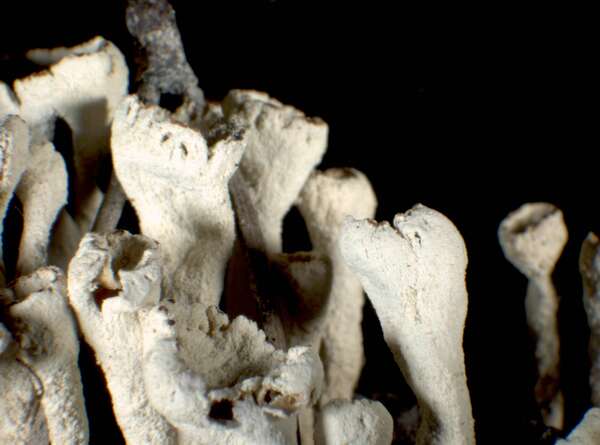

P.L. Nimis; Owner: Department of Life Sciences, University of Trieste
Herbarium: TSB (2661)
2001/12/04
detail of cups
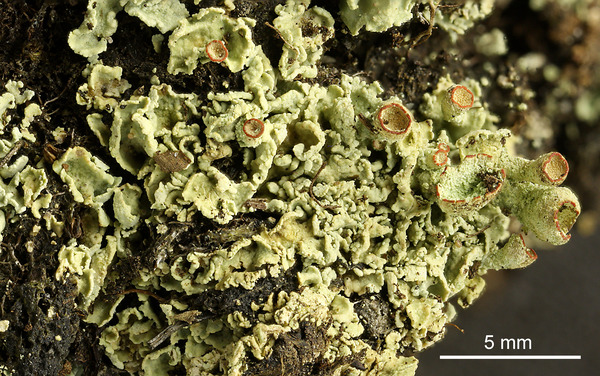

Felix Schumm – CC BY-SA 4.0
[16530], Österreich, nordöstlich von Ischgl beim Silvretta Stausee, ca. 2000 m. Leg. A. Matuschewski 07.2010. Det. Schumm 07.2010
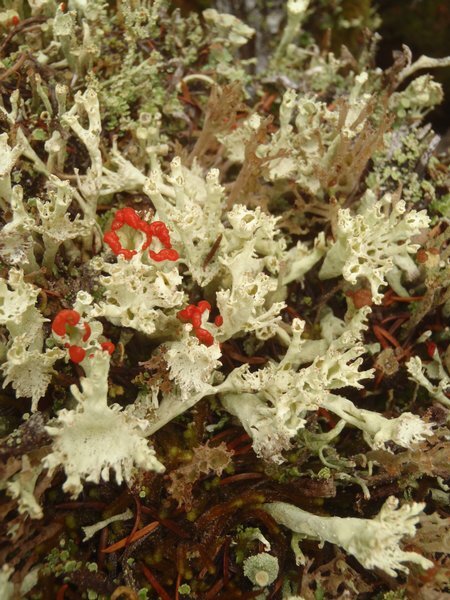

Curtis Randall Björk – CC BY-SA 4.0
British Columbia, Boundary Ranges 2012-09-03 Understory of sub-boreal forest
Growth form: Fruticose
Substrata: lignum, soil, terricolous mosses, and plant debris
Photobiont: green algae other than Trentepohlia
Reproductive strategy: mainly asexual, by soredia, or soredia-like structures (e.g. blastidia)
Commonnes-rarity: (info)
Alpine belt: very rare
Subalpine belt: common
Oromediterranean belt: extremely rare
Montane belt: very rare
Submediterranean belt: absent
Padanian area: absent
Humid submediterranean belt: absent
Humid mediterranean belt: absent
Dry mediterranean belt: absent

Predictive model
| Herbarium samples |


P.L. Nimis; Owner: Department of Life Sciences, University of Trieste
Herbarium: TSB (2661)
2001/12/04
detail of cups


Felix Schumm – CC BY-SA 4.0
[16530], Österreich, nordöstlich von Ischgl beim Silvretta Stausee, ca. 2000 m. Leg. A. Matuschewski 07.2010. Det. Schumm 07.2010


 Index Fungorum
Index Fungorum
 GBIF
GBIF
